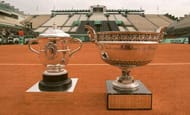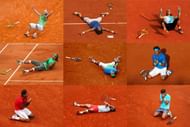The story of the “French Clay-Court Championships” (as it was called then) began way back in 1891. Back then the tournament was reserved only for players who were members of French clubs. It took 34 years before the tournament was thrown open to amateurs from across the globe. Thus, the “French Open” (as we know it today) was born in 1925.
History behind the name
Couple of years later, a stadium dedicated to the French defense of their Davis Cup title was built in Paris. This stadium was named after Roland Garros, who was a pioneer of aviation and was killed in an air battle during the First World War. Subsequently, the French Open started being referred to as the Roland-Garros.
Only Grand Slam which is played on clay
Today, the tournament finds a prominent place in the international tennis calendar. It’s playing surface, which is clay; makes it one of the most physically demanding grand slam tournament. It is the only grand slam to be played on clay.
Clay courts are traditionally slow and here the players often rely a lot on top spin & drop shots. Points tend to go on for longer duration as there are fewer winners. Here, the players who can slide well on the court assume an advantage over those who can’t.
It is interesting to note that the concept to use clay as a playing surface began just as a practical consideration. In 1880, The Renshaw Brothers in Cannes, apparently used powdered tera-cotta to cover grass courts which were sagging in the heat. And since then, clay courts were introduced in the tennis family.
Modern day clay courts are usually built using different layers of stones, gravel, clinker, limestone and crushed bricks. And the difference in the composition of the clay surfaces around the world makes the playing characteristics variable. Venus Williams had famously once said, “All clay courts are different, none play the same”.
Many greats have failed to conquer the Roland Garros
Given the unique style of play required to succeed at Roland-Garros, some of the biggest names in tennis history have failed to win a trophy here. This list includes greats like Bill Tilden, Maria Bueno, Jimmy Connors, John McEnroe, Boris Becker & Pete Sampras among others.
Players who ruled the French Open
But at the same time, there have been players who have literally ruled the Roland-Garros. In the early days, from 1922 to 1932; in the men’s category, the famous Musketeers – Henri Cochet, Rene Lacoste, Jean Borota and Jacques Brugnon dominated the tournament. In the women’s category, Suzanne Lenglen won the title six times between 1920 and 1926.
In the open era, initially it was Bjon Borg with six titles who dominated the men’s singles. In the women’s singles, Chris Evert won the title for a record seven times. She is closely followed by Steffi Graf, who has won the coveted trophy six times. Players like Justine Henin, Ivan Lendl, Mats Wailander, Monica Seles and Guastavo Kuerten have also excelled at the Roland-Garros.
Nadal – The King of Clay
But off late, Spaniard Rafael Nadal also called as the ‘king of clay’ has made Roland-Garros his second home. Nadal has won the French Open title nine times. He won it for five consecutive years from 2010 to 2014.
Previously he had won it on four consecutive years from 2005 to 2008. In fact, till date he has lost only twice at the Roland-Garros, once in the fourth round in 2009 and then in the quarter-finals in 2015.
With this rich history of 126 years and an uncountable list of memorable matches between the greats of the game, every tennis player dreams of taking home the French Open or the Roland Garros title.
Also Read: Roland Garros 2017 diary: Rafael Nadal and Dominic Thiem, the freaks of nature
What is the foot injury that has troubled Rafael Nadal over the years? Check here


